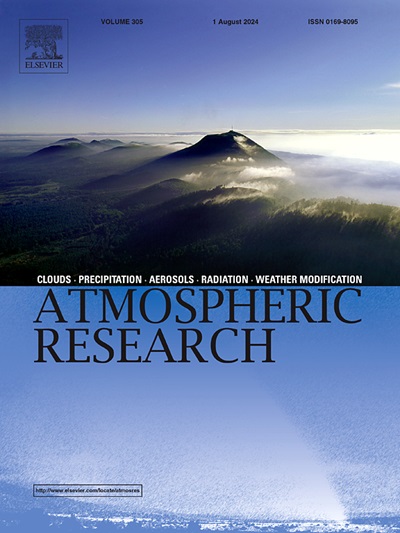Research on the characteristics and mechanisms of convective cloud precipitation in the Mount Everest region
IF 4.5
2区 地球科学
Q1 METEOROLOGY & ATMOSPHERIC SCIENCES
引用次数: 0
Abstract
Fundamental research on refined observations and structural characteristics of the spatial and temporal evolution of precipitation-producing weather in the Mount Everest region (MER) is lacking. Via the second comprehensive scientific investigation and research plan of the Qinghai–Tibet Plateau, in this paper, we report the first observation experiment with multisource remote sensing detection equipment for studying convective cloud precipitation on the northern slope in the MER from 2019 to 2023, revealing the unique mechanism triggering summer convective cloud precipitation and the spatial and temporal evolution of its macro- and microscale physical structural characteristics. Multisource detection equipment, including X-band dual-polarization Doppler weather radar, ground automatic stations, 2D video disdrometers, microwave radiometers and radio sounding, were employed to construct an observation network. Secondary inversion data were derived from these multisource observation data. Compared with observation data from other regions, such as Chengdu, summer convective cloud precipitation data in the MER revealed two unique macro- and microstructural characteristics. The internal physical mechanism underlying the influence of the northern slope on summer convective cloud precipitation in the MER is that the extremely high elevation, complex topography, summer South Asian monsoon and intense solar radiation jointly promote the formation of intense thermal vertical motion throughout the troposphere and weak dynamic uplift and poor water vapor conditions in the boundary layer. This study may bridge the gap in detailed observations of the weather structure of the convective cloud precipitation for the northern slope of the MER in summer and provide a significant reference for further studies of Tibetan Plateau weather changes and their potential impacts on the global climate.
求助全文
约1分钟内获得全文
求助全文
来源期刊

Atmospheric Research
地学-气象与大气科学
CiteScore
9.40
自引率
10.90%
发文量
460
审稿时长
47 days
期刊介绍:
The journal publishes scientific papers (research papers, review articles, letters and notes) dealing with the part of the atmosphere where meteorological events occur. Attention is given to all processes extending from the earth surface to the tropopause, but special emphasis continues to be devoted to the physics of clouds, mesoscale meteorology and air pollution, i.e. atmospheric aerosols; microphysical processes; cloud dynamics and thermodynamics; numerical simulation, climatology, climate change and weather modification.
 求助内容:
求助内容: 应助结果提醒方式:
应助结果提醒方式:


